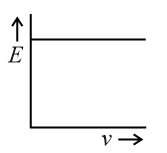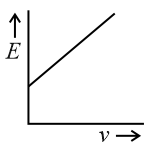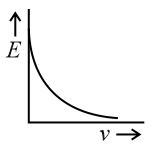EASY
Earn 100
The correct graph respectively the relation between energy of photoelectrons and frequency of incident light is
(a)

(b)

(c)

(d)

50% studentsanswered this correctly
Important Questions on Dual Nature of Matter and Radiation
MEDIUM
MEDIUM
EASY
HARD
MEDIUM
MEDIUM
In a photocell circuit, the stopping potential, is a measure of the maximum kinetic energy of the photoelectrons. The following graph shows experimentally measured values of stopping potential versus frequency, of incident light.

The values of Planck's constant and the work function as determined from the graph are (taking the magnitude of electronic charge to be,),
HARD
MEDIUM
MEDIUM
MEDIUM
MEDIUM
MEDIUM
EASY
MEDIUM
MEDIUM
MEDIUM
MEDIUM
MEDIUM
EASY
HARD
| 0.3 | 2.0 |
| 0.4 | 1.0 |
| 0.5 | 0.4 |
Given that Planck's constant (in units of ) found from such an experiment is :

